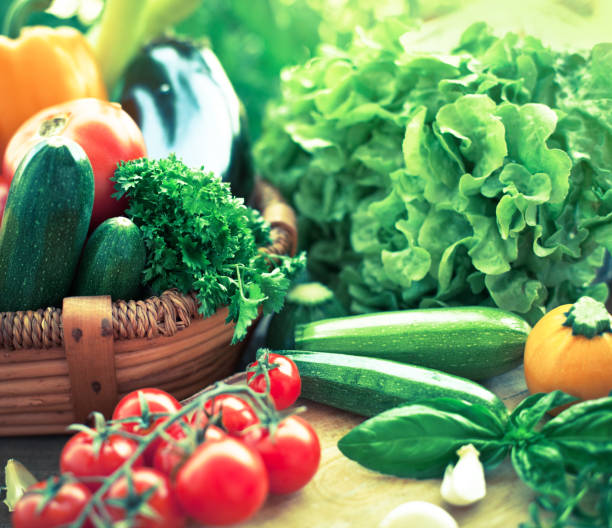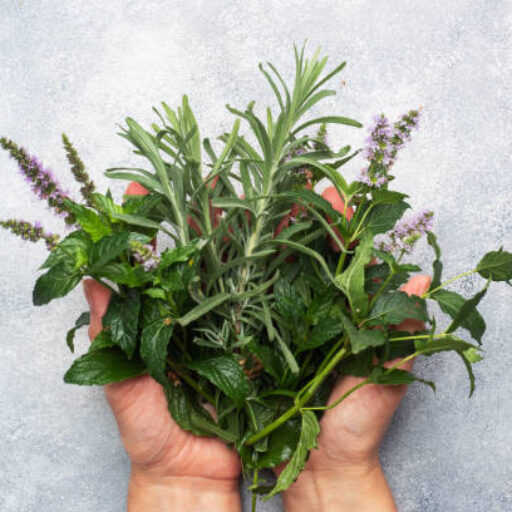Introduction
There’s something truly special about cooking with homegrown herbs. Not only do they add incredible flavor to your dishes, but they also bring a sense of satisfaction that comes from nurturing a plant from seed to table. In this article, we’ll explore the joys of cooking with homegrown herbs, how to use them effectively in your meals, and the benefits they offer.
Common Homegrown Herbs
When it comes to homegrown herbs, there are a few staples that every kitchen should have. Here are some popular choices:
- Basil: Perfect for Italian dishes, basil adds a fresh, aromatic flavor to sauces and salads.
- Parsley: Often used as a garnish, parsley is versatile and adds a pop of color and freshness to any dish.
- Cilantro: Essential in many cuisines, cilantro brings a vibrant, citrusy note to salsas and curries.
- Mint: This refreshing herb is not just for tea; it can elevate desserts and cocktails alike.
- Thyme: With its earthy flavor, thyme is ideal for roasting meats and vegetables.
- Rosemary: Known for its strong aroma, rosemary pairs beautifully with potatoes and grilled meats.
Harvesting Your Herbs

Freshness vegetables
To get the most out of your homegrown herbs, proper harvesting is key.
- Best Practices for Harvesting: Always use clean scissors or shears to snip off leaves or stems. This helps prevent damage to the plant and promotes healthy growth.
- When to Harvest for Maximum Flavor: Harvest herbs in the morning after the dew has dried but before the sun is too hot. This is when their oils are most concentrated, ensuring you get the best flavor.
Preparing Herbs for Cooking
Once you’ve harvested your herbs, it’s time to prepare them for cooking.
- Cleaning and Storing Fresh Herbs: Rinse your herbs gently under cold water to remove any dirt. Store them in the fridge wrapped in a damp paper towel or in a glass of water, like a bouquet, to keep them fresh.
- Techniques for Chopping and Using Herbs: Use a sharp knife to chop herbs finely. The more you chop, the more oils are released, enhancing the flavor. For delicate herbs like basil, consider tearing the leaves to avoid bruising.

Bunches of fresh sprigs of mint and rosemary. Women’s hands hold a bouquet of fragrant herbs. Grey concrete background
Incorporating Herbs into Your Cooking
Now comes the fun part—using your herbs in the kitchen!
- Fresh vs. Dried Herbs: When to Use Each: Fresh herbs are best added at the end of cooking to preserve their flavor, while dried herbs should be added earlier to allow their flavors to develop.
- Pairing Herbs with Various Ingredients: Experiment with different combinations. For instance, basil pairs well with tomatoes, while mint complements lamb beautifully.
- Cooking Techniques that Enhance Herb Flavours: Sautéing herbs in oil can help release their essential oils, making your dishes more aromatic and flavourful.
Herb-Infused Oils and Butters
Creating herb-infused oils and butter is an excellent way to enjoy the flavors of your herbs long after the growing season has ended.
- How to Make Herb-Infused Oils: Simply add your choice of herbs to a bottle of olive oil and let it sit for a few weeks. This oil can then be used for dressings, marinades, or drizzling over dishes.
- Creating Flavored Butter with Fresh Herbs: Mix softened butter with finely chopped herbs, a pinch of salt, and a squeeze of lemon juice. Roll it into a log, wrap it in parchment paper, and refrigerate. This makes a delicious addition to grilled meats or vegetables.
Herbs in Different Cuisines
Herbs play a crucial role in various cuisines around the world. Here’s how to use them:
- Mediterranean Cooking with Herbs: Use basil, oregano, and rosemary in pasta dishes, salads, and grilled meats.
- Asian Flavors: Using Herbs in Stir-Fries and Curries: Incorporate cilantro, mint, and Thai basil into your stir-fries and curries for a burst of freshness.
- Latin American Dishes Featuring Fresh Herbs: Cilantro is a must in salsas and guacamole, while oregano adds depth to many Mexican dishes.
Herb-Forward Recipes
To get you started, here are a couple of simple recipes that highlight the use of fresh herbs:
- Herb-Infused Pasta: Cook your pasta and toss it with olive oil, garlic, and a mix of fresh herbs like basil, parsley, and thyme for a quick and delicious meal.
- Minty Fruit Salad: Combine your favorite fruits and toss them with chopped mint for a refreshing dessert.
Storing and Preserving Herbs

Growing your own herbs
To make the most of your homegrown herbs, consider these storage and preservation methods:
- Best Practices for Storing Fresh Herbs: Keep herbs in the fridge wrapped in a damp paper towel or in a jar of water.
- Drying and Freezing Herbs for Later Use: You can dry herbs by hanging them upside down in a dark, dry place. Alternatively, chop herbs and freeze them in ice cube trays with water or oil for easy use later.
Health Benefits of Cooking with Herbs
Using fresh herbs in your cooking not only enhances flavor but also provides numerous health benefits:
- Nutritional Value of Common Herbs: Many herbs are rich in vitamins A, C, and K, as well as antioxidants.
- Medicinal Properties and Uses: Herbs like garlic and ginger have anti-inflammatory properties, while others like mint can aid digestion.
Conclusion
Cooking with homegrown herbs is a delightful way to enhance your culinary creations. With their vibrant flavors and numerous health benefits, these herbs can transform your meals from ordinary to extraordinary. So, get growing, start experimenting in the kitchen, and enjoy the fresh, aromatic flavors that only homegrown herbs can provide! By embracing the art of cooking with homegrown herbs, you not only elevate your dishes but also connect with the food you prepare in a meaningful way. Happy cooking!
FAQs About Cooking with Homegrown Herbs
Here are some frequently asked questions regarding cooking with homegrown herbs, covering their uses, cultivation, and benefits.
1. What are homegrown herbs?
Homegrown herbs are plants that you cultivate in your garden or indoors, specifically for culinary use. Common examples include basil, parsley, mint, and rosemary.
2. Why should I cook with homegrown herbs?
Cooking with homegrown herbs enhances the flavor of your dishes, provides fresh ingredients, and offers numerous health benefits. Plus, there’s a sense of satisfaction in using something you’ve grown yourself.
3. What are the best herbs to grow at home?
Some of the best herbs to grow at home include:
- Basil: Great for Italian dishes.
- Parsley: Versatile and nutritious.
- Cilantro: Essential for many Latin and Asian recipes.
- Mint: Refreshing in drinks and desserts.
- Thyme: Excellent for roasting meats and vegetables.
4. How do I harvest my herbs?
Harvest herbs by cutting the leaves or stems with clean scissors. It’s best to do this in the morning when the oils are most concentrated for maximum flavor.
5. How should I store fresh herbs?
Store fresh herbs in the fridge wrapped in a damp paper towel or in a glass of water, similar to how you would store flowers, to keep them fresh longer.
6. Can I use dried herbs instead of fresh ones?
Yes, dried herbs can be used in place of fresh herbs, but they are more concentrated in flavor. Use about one-third the amount of dried herbs compared to fresh.
7. What are some easy recipes using homegrown herbs?
You can make herb-infused oils, add fresh herbs to salads, or create simple pasta dishes with olive oil and a mix of your favorite herbs.
8. How do I prepare herbs for cooking?
Clean your herbs gently under cold water, then chop them finely with a sharp knife. For delicate herbs like basil, consider tearing the leaves to avoid bruising.
9. What are the health benefits of cooking with herbs?
Homegrown herbs are rich in vitamins, minerals, and antioxidants. Many herbs also have medicinal properties, such as anti-inflammatory and digestive benefits.
10. How can I preserve herbs for later use?
You can dry herbs by hanging them upside down in a dark, dry place or chop them and freeze them in ice cube trays with water or oil for easy use later.
11. Are there any toxic herbs I should avoid?
Yes, some herbs can be toxic if consumed. Always research or consult a reliable source before foraging or using wild herbs.
12. How do I know when to use fresh herbs versus dried herbs?
Use fresh herbs at the end of cooking to preserve their flavor, while dried herbs should be added earlier to allow their flavors to develop.
13. Can I grow herbs indoors?
Yes, many herbs can be successfully grown indoors with adequate sunlight, either from a window or grow lights.
14. What cooking techniques enhance herb flavors?
Sautéing herbs in oil can help release their essential oils, making your dishes more aromatic and flavourful.
15. How can I create herb-infused oils?
To make herb-infused oils, simply add your choice of herbs to a bottle of olive oil and let it sit for a few weeks. This oil can be used in dressings or marinades.
16. What are some popular herb pairings?
Basil pairs well with tomatoes, mint complements lamb, and thyme is excellent with chicken and roasted vegetables.
17. How do I incorporate herbs into different cuisines?
Use basil, oregano, and rosemary in Mediterranean cooking; cilantro and mint in Asian dishes; and cilantro in Latin American recipes.
18. What should I do if my herbs start to wilt?
If your herbs are wilting, try trimming the stems and placing them in water or a damp paper towel to revive them.
19. How can I encourage more growth from my herbs?
Regularly harvesting your herbs encourages new growth. Snip leaves or stems as needed, but avoid taking more than one-third of the plant at a time.
20. What are some creative ways to use leftover herbs?
Use leftover herbs in smoothies, as a garnish for soups, or in homemade dressings and marinades to avoid waste.


